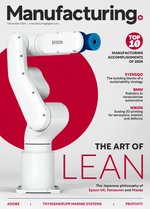RIKEN & University of Tokyo Continue Fight Against Plastic

With the recent failure of the Global Plastics Treaty to materialise, the environmental impact of plastic continues to be a pressing conversation.
Only 9% of plastic worldwide actually goes through the recycling process with the bulk of it landing in landfills, incinerators, or worse, the natural environment.
The majority of discarded plastic finds its final resting place in the oceans.
Currently, every minute sees a dump truck's worth of plastic entering our oceans.
If no actions are taken, by 2050, the ocean will have more plastic than fish, an alarming prediction by scientists.
The need for regulation is clear, but so is the necessity of defensive action like the Ocean Cleanup or Seabin initiatives which strive to remove plastics from oceans.
In addition to these defensive actions we also need innovations that seek to address the problem of plastic itself.
Researchers from the RIKEN Center for Emergent Matter Science and the University of Tokyo are doing exactly that, introducing a groundbreaking plastic that completely dissolves in seawater.
An era-defining breakthrough
This new biodegradable plastic utilises supramolecular chemistry, a method involving ionic monomers that form reversible salt bonds.
This structure not only retains the material's strength during usage but also ensures it quickly degrades in salty environments.
Experimental results confirm that this innovative plastic starts breaking down mere hours after exposure to seawater and fully disintegrates in soil within ten days, enriching the soil with nutrients akin to fertiliser.
The production process involves forming a viscous layer from structural elements and a watery layer loaded with salt ions, a technique that helps maintain its durability and effectiveness.
The best part? An impressive 91% of this new material’s primary component can be recovered post-dissolution, making it an eco-friendly and highly recyclable option.
The versatility of the material mimics that of traditional thermoplastics, promising strength and a variety of moulding possibilities.
Combatting microplastic pollution
Traditionally, microscopic residues left by degrading plastics, known as microplastics, invade oceanic and human ecosystems.
Conventional biodegradable plastics often degrade improperly in marine settings or leave behind hazardous residues.
Experts champion the newly developed material as a promising solution to eradicate microplastics entirely by ensuring that the plastic dissolves fully without leaving harmful traces.
The unveiling of this plastic innovation highlights the need for a multi-pronged approach to plastic after the failure of the Global Plastics Treaty.
“With this new material, we have created a new family of plastics that are strong, stable, recyclable, can serve multiple functions, and importantly, do not generate microplastics," says Lead Researcher Takuzo Aida.
Innovations such as this new material are critical. Manufacturers cannot wait for regulations to guide the way.
They must be proactive and pursue independent methods as well to safeguard our environmental and curtail plastic waste.
This fact is widely recognised by leaders across the manufacturing sector, as they explore plastic alternatives.
Global deployment potential
Experts, including Joaquín Martínez Urreaga from the Polytechnic University of Madrid, see this development as a viable solution to marine pollution.
There is hope that this new type of plastic will be adopted widely, particularly within industries that rely heavily on single-use packaging.
However, the transition from traditional plastic materials to this innovative biodegradable alternative will require coordinated efforts among scientists, manufacturers, and policymakers.
Not only must this material be produced on a large scale, but the infrastructure for its use and recycling needs establishment.
To create this infrastructure we need regulations like the Global Plastics Treaty- which hopefully can be agreed upon when things reconvene next year.
Explore the latest edition of Manufacturing Digital and be part of the conversation at our global conference series, Manufacturing LIVE.
Discover all our upcoming events and secure your tickets today.
Manufacturing Digital is a BizClik brand.
- How Consumer Goods Manufacturers Are Tackling Scope 3Sustainability & ESG
- Creating a 'Greener' Approach to Christmas Tree ProductionSustainability & ESG
- PUMA: Educating Gen Z on Green Fashion ManufacturingSustainability & ESG
- UPDATED VENUE & DATE – Manufacturing LIVE Chicago 2025Sustainability & ESG


